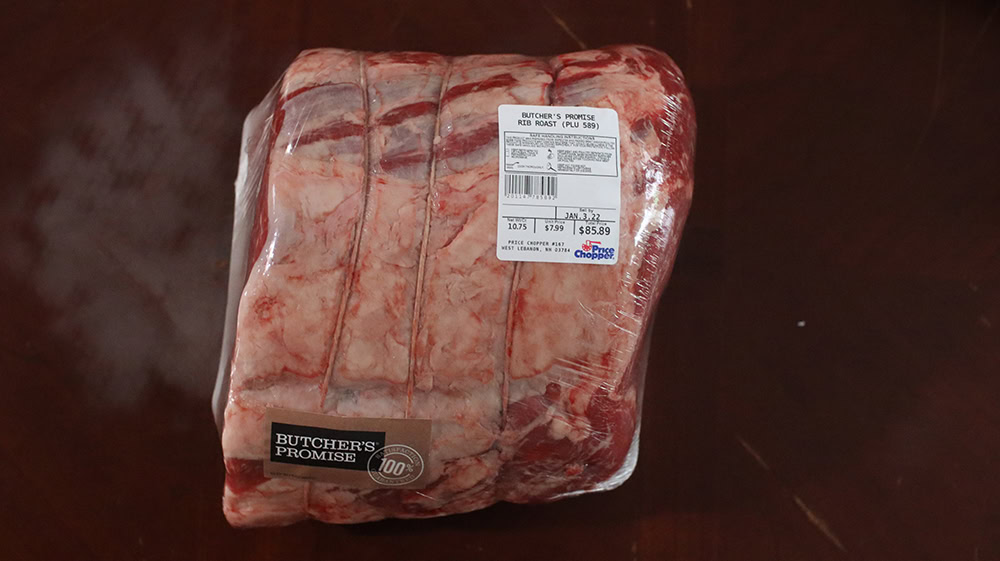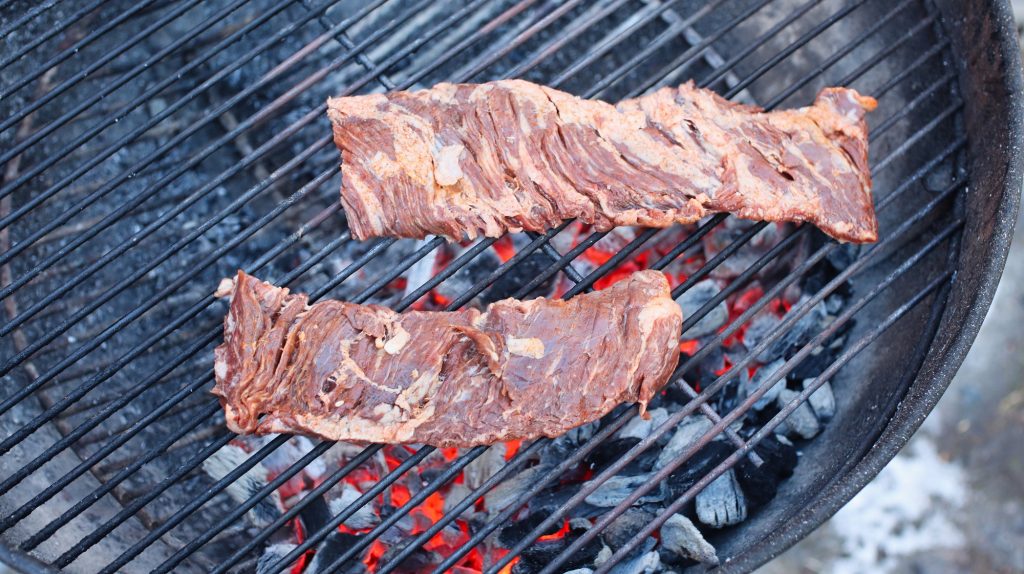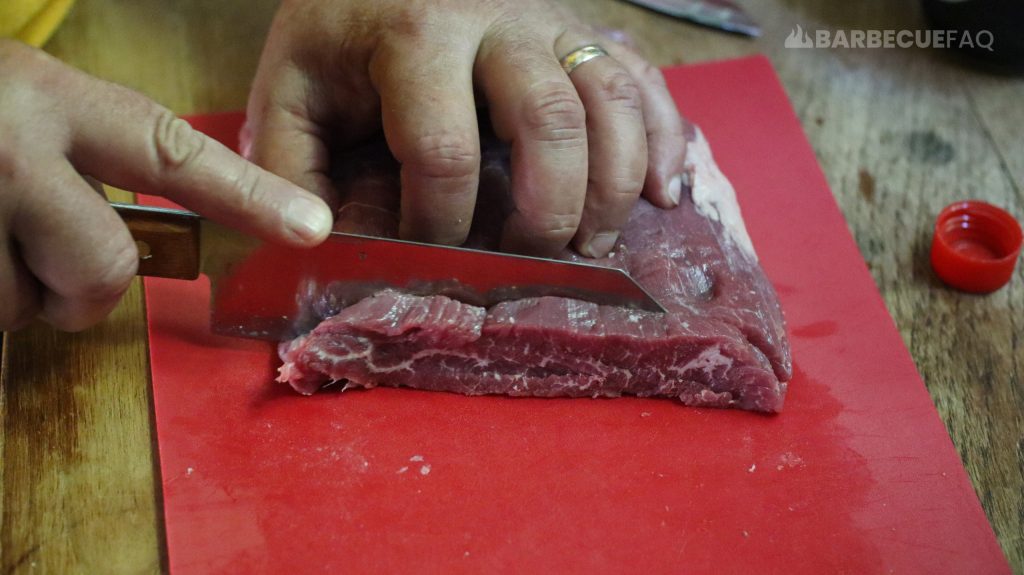1. Start by looking at the skirt steak and identifying the grain direction.
Here’s a picture of a skirt steak for reference:

The grain direction is illustrated by the dotted white line.
2. In the photo above photo, we have the grain running vertically.
Meaning, you’d slice against the grain horizontally (pictured in dotted white lines).

That’s truly all there is to it – identify the grain direction and slice perpendicular to it.
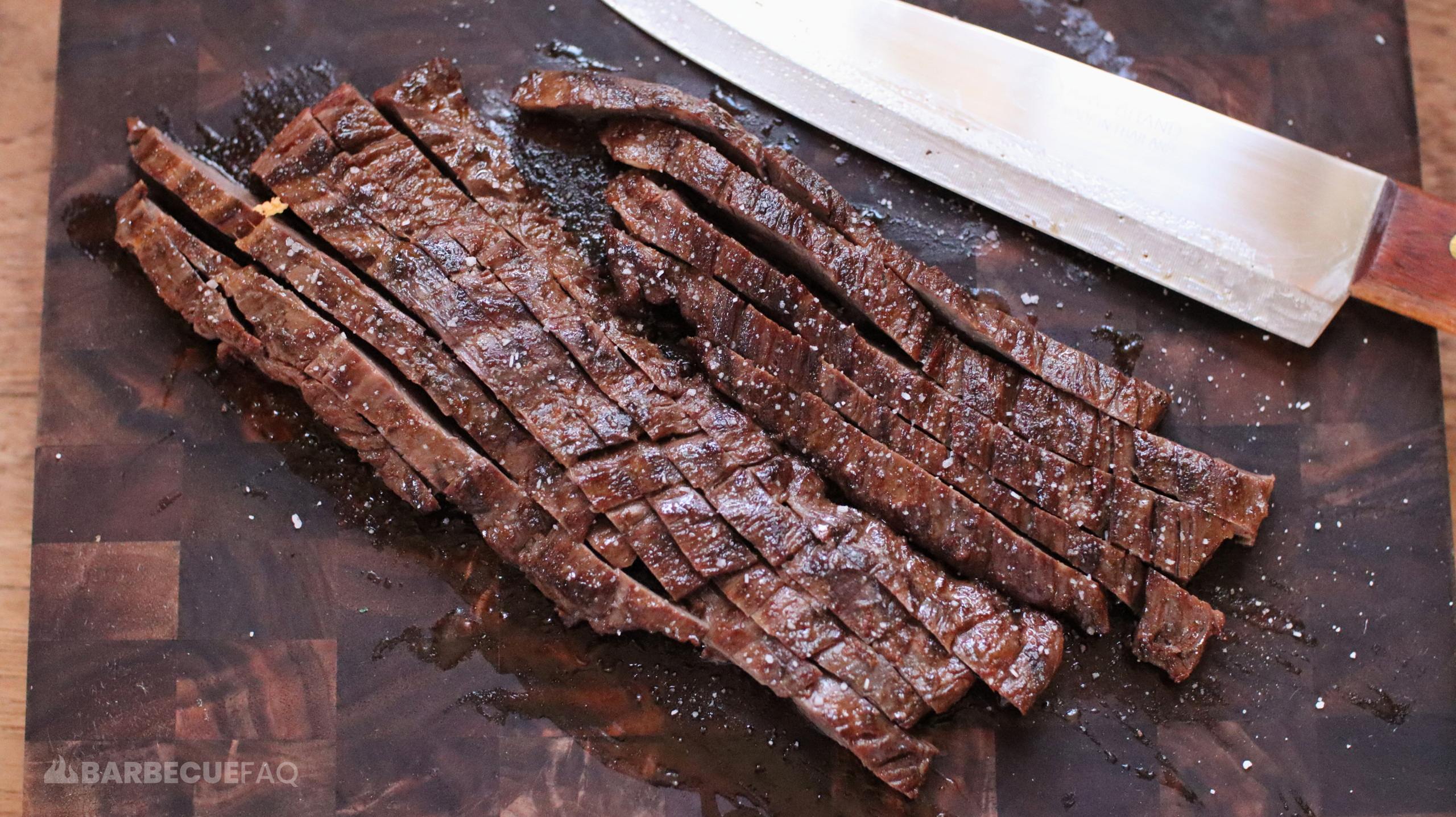
You could take this a step further to minimize the fiber lengths by slicing on a bias (knife angled at 45 degrees) which also improves presentation.
However, this is less important than simply slicing against the grain.
But…What About Inside vs Outside Skirt Steak? Is it the Same?
While inside and outside skirt steak do have a few noteworthy differences, the grain direction and the way in which they’re sliced are much the same.
Here’s an example of the grain direction on an outside skirt steak (also pictured above) and the direction in which you’d slice:
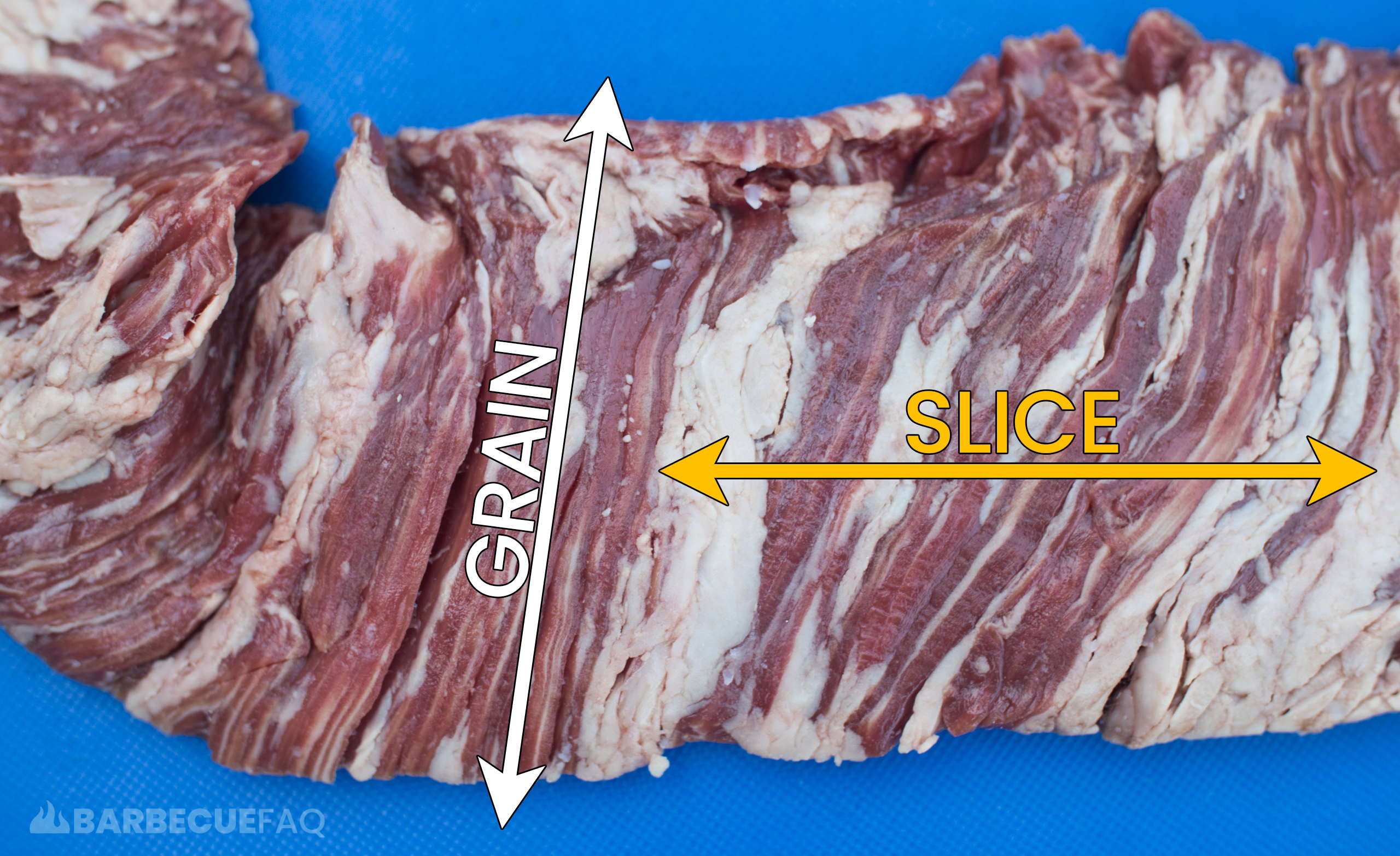
Similarly, here’s an example with inside skirt steak, the direction of the grain as well as the way in which you’d slice:

Why is Skirt Steak Sliced Against the Grain?
To put it simply: The goal when slicing meat is to shorten the muscle fiber lengths as much as possible in order to make chewing easier.
- Cutting with the grain stacks the muscle fibers on top of each other.
- Cutting against the grain shortens the fiber lengths.
The next time you have a piece of skirt steak, slice the meat in both directions.
- Attempt to tear the muscle fibers with the grain – it’s almost impossible.
- Attempt to tear the muscle fibers against the grain – it’s much easier (more tender).
Are Grill Marks the Same as Meat Grain?
No.
This is a common mistake that people make when looking at the grain.
Sear and/or grill marks have nothing to do with the meat.
Grill marks can also be manipulated in any direction based on how you place the meat on the grill grates or cooking surface.
Here’s a seared skirt steak:

This is also the reason it’s easier to identify meat grain before cooking.
Sear marks are the result of the maillard reaction of amino acids and reducing sugars and are completely independent of grain structure.


